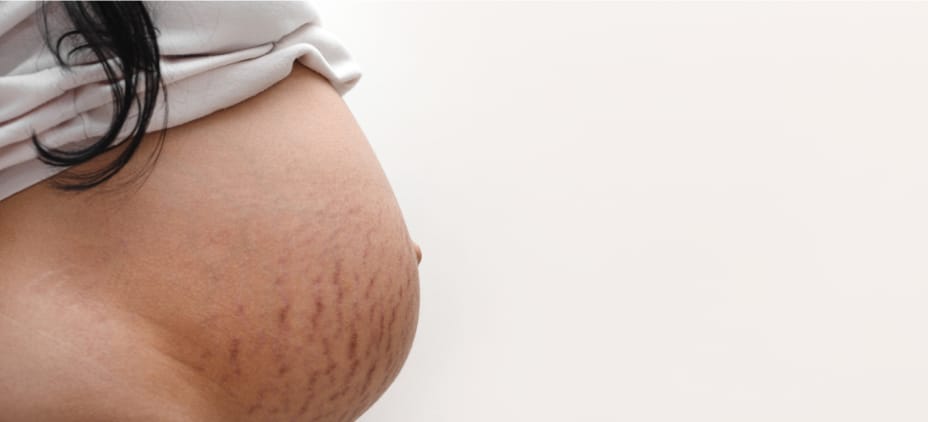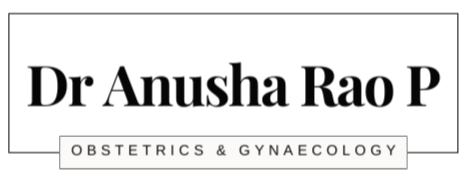
Stretch marks, scientifically known as striae gravidarum, are a common concern during pregnancy. These long, narrow streak like lines that develop on the skin occur due to the stretching of the dermis, the middle layer of skin containing collagen and elastin fibers. As the body undergoes significant changes to accommodate the growing fetus, the skin stretches, leading to the formation of these marks. They can be pink, red, purple or brown, depending on the skin colour. They are common in pregnancy, and are found to affect around 8 out of 10 pregnant women as per the NHS, UK.
During pregnancy, hormonal changes play a crucial role in the development of stretch marks. The increased production of hormones, such as cortisol and estrogen, affects the skin’s elasticity, making it more prone to stretching. Additionally, genetic factors can contribute to an individual’s susceptibility to stretch marks.
The abdomen is the most common area for stretch marks during pregnancy, but they can also appear on the breasts, hips, thighs, and buttocks. While some women may embrace these marks as a natural part of the pregnancy journey, others seek ways to minimize their appearance.
Embrace the journey of pregnancy with these tips to prevent stretch marks! ✨
💧 Stay hydrated: Drink plenty of water to keep your skin hydrated.
❇️ Moisturize daily: Use a nourishing lotion or oil to keep your skin supple. Search for creams containing ingredients like cocoa butter or vitamin E.
🥗 Balanced diet: Include foods rich in vitamins A and C for skin elasticity.
💪 Gentle exercises: Incorporate pregnancy-safe workouts to improve circulation.
🤰 Gradual weight gain: Aim for a steady and healthy weight gain during pregnancy.
The basic cause of stretch marks is stretching of the skin and their severity is affected by several factors, including your genetics and the degree of stress on the skin. While it’s not entirely possible to prevent them, the above strategies may help.
Though stretch marks are generally considered harmless and fade over time, various treatment options exist for those seeking to reduce their visibility. These may include laser therapy, microdermabrasion, or prescription creams. It’s essential for pregnant individuals to consult with their gynaecologist/dermatologist before using any treatment to ensure it’s safe for both the mother and the developing baby.
Ultimately, while stretch marks are a natural outcome of the body’s incredible adaptation during pregnancy, the emotional response to them varies. Some see them as badges of motherhood, while others may feel self-conscious. Regardless of that, understanding the factors contributing to their development can empower individuals to make informed choices about prevention and treatment.
Remember, each stretch mark tells a unique story of motherhood! 💖
Emergency contraception is used to prevent an unplanned pregnancy after unprotected sex or contraceptive failure.
